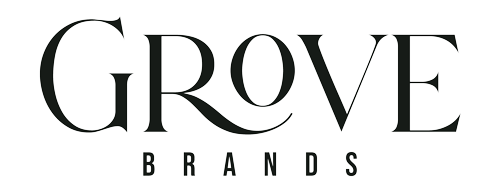What’s The Difference Between Aesthetic vs Esthetic for Beauty Businesses?
Entrepreneurs looking to open a business in the beauty industry may notice that oftentimes, businesses are spelled differently. Aestheticians and estheticians, while separated by a single letter, offer distinctly different services for clients. So, what separates these words, and how should you approach the branding of your business with meaning and context in mind?
The history and study of aesthetic vs esthetic
Language is constantly changing and evolving over time. Simply think about the number of new words incorporated into the English language in the past decade, or consider words that have been imbued with new meaning, and you get an idea. Similarly, context dramatically changes the usage and meaning of a word.
Etymology
Aesthetic comes from the Greek aisthetikos, meaning “of or for perception by the senses, perceptive," of things, "perceptible.” Its usage has ranged from strictly philosophical, to criticism of taste, and art for art’s sake.
While slightly different, the current meanings of the word are fairly close to its original Greek meaning, but with a bit more specificity.
Current dictionary definitions
According to the Merriam-Webster dictionary, aesthetic and esthetic are interchangeable words. Aesthetic is more commonly used, while esthetic is specifically a US spelling variant. However, there are multiple definitions for both.
As a noun, esthetics and aesthetics refers to the study or theory of beauty. This includes art, nature, taste, and other things we consider to be beautiful. It also examines why we perceive certain things to be beautiful, while others, not so much.
As an adjective, the words are synonymous with something being beautiful or pleasing to the senses. Additionally, another meaning refers to improvements or corrections to one’s appearance. This is the definition most important to us, and to the branding of beauty businesses.
What aesthetic vs esthetic means in the context of the beauty industry
The difference between an aesthetician and an esthetician is one of training and offered services. Business owners and operators with aesthetics licenses can actually suffer penalties or revocation of their license if they offer some esthetics services as an aesthetician.
What beauty businesses should be named with aesthetics?
Business owners with aesthetics training and licenses should consider using some form of the word aesthetic in their branding. This lets your potential clients know the types of services you’ll likely offer, before they even visit your business.
Generally, aestheticians focus on more medical specializations and treatments. If they don’t have their own business, you find aestheticians in dermatologist offices or medical settings. Services offered include microblading, laser hair removal, medical grade skin peels, and many more depending on the aesthetician and location.
One client of ours, C King Aesthetics, offers injectables like BOTOX, laser treatments, along with personalized facials you’d find in a more esthetics-focused studio.
What services are offered by businesses with esthetics?
On the other hand, esthetics businesses have different training and a separate license. While some services overlap, such as chemical peels, they are of a different grade. Chemical peels used by estheticians do not penetrate the skin as deeply, and there are overall less side effects involved.
Rather than laser hair removal, some estheticians specialize in other methods of hair removal, such as waxing. Other facial services are offered as well, and als fall in the category of cosmetic rather than medical. For example, an esthetics business may offer full waxing services, Hydafacial, nano-needling, and other types of facials. They don’t necessarily offer hair removal, though. The Esthy Clinic in Los Angeles is one such clinic that solely focuses on facial services.
The key differences
So, the main thing to think about when separating aestheticians and estheticians is medical association. Aesthetics deals more with medical facial services, while esthetics provides beneficial cosmetic services. Their methods of hair removal also differ.
How you should brand your business
With this distinction in mind, branding your business properly is important. If a business that offered waxing services branded itself as aesthetics, it would cause confusion to clients and peer businesses. The same goes for medical aestheticians branding their services under the label of esthetics.
What services are you licensed to provide?
When working with branding professionals, the first thing to make clear is the services provided by your business. The distinction between medical and cosmetic services matters. Your clients want to see more serious, professional branding associated with aestheticians.
Esthetics businesses have a bit more maneuverability when it comes to making their branding a bit more playful. It’s important for your beauty business to have a welcoming, positive environment for new clients. That includes your beauty brand’s website, too.
Think about opportunities for complementary branding
Consider the business community that surrounds yours. If you have a decent relationship with a few other business owners around, and there is an overlap in potential customers, consider complementary branding. This allows you to tap into loyal customers of another business, who are more likely to expect a positive experience with yours.
For example, look at a local spa with regular customers that doesn’t offer waxing services. You already know that these clients are interested in beauty services. They trust the spa, because they are regular customers. Offer a small discount to spa customers if they come for waxing at your studio, and vice versa for your current clients to the spa.
For branding expertise in the beauty industry, come and see what Grove Brands offers. We’ve created websites, branding, and all manner of design materials for a multitude of estheticians and aestheticians. A branding consultation is completely free, so contact us today! Let’s grow together.

